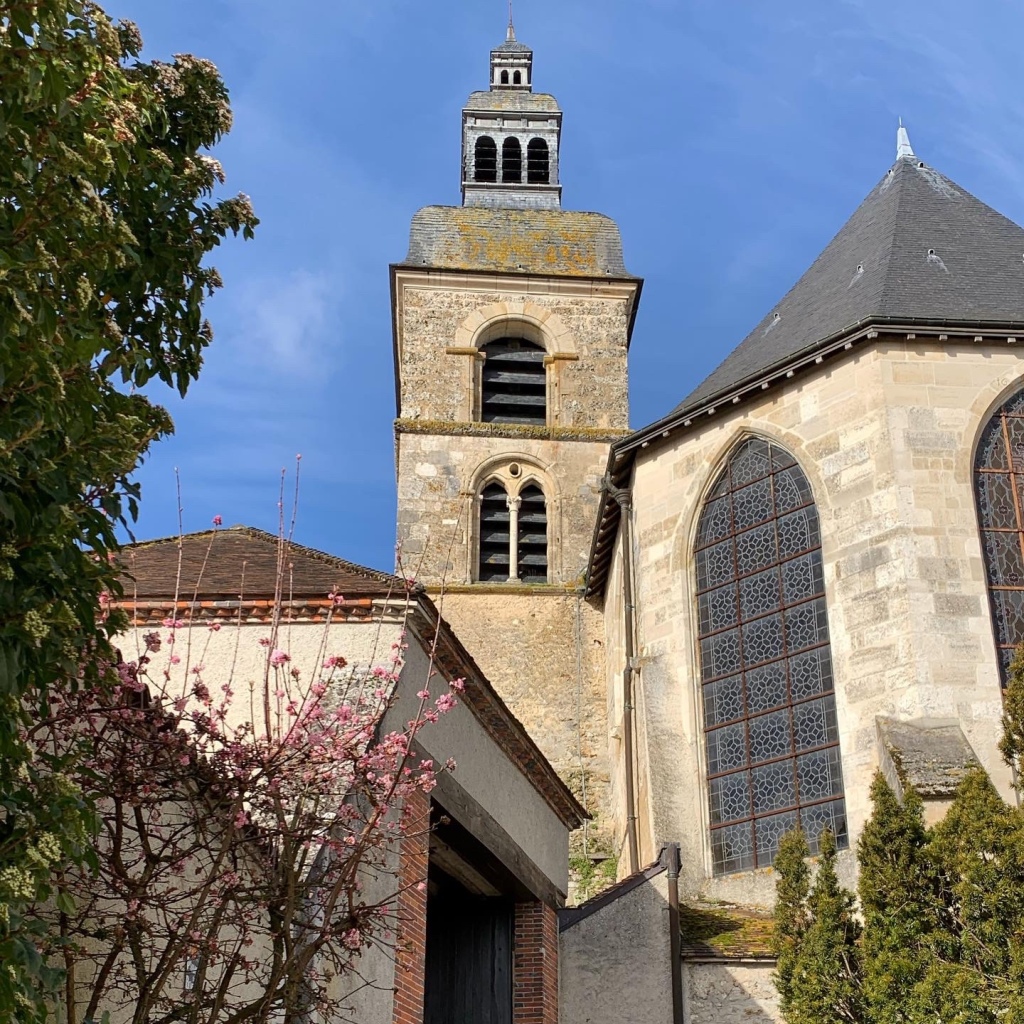
Nearly 400 years ago, in the village of Hautvillers, the Benedictine monk, Dom Pérignon, was tinkering with the wine. During his tenure as abbey cellar master, he advanced the extensive blending used in champagne, devised pressing techniques to create white wine from dark grapes, and improved the quality of glass in bottles that had previously routinely exploded.
He did not create the bubbly concoction we now know as champagne, yet his name is synonymous with some of the best. It’s because of this association that I elected to hike from Aÿ to Hautvillers on my way to Épernay.
Thank you Dom. It was the highlight of my trek.

The night before, I had stayed at at Domaine Sacret in Aÿ. All I needed was a hot bath and a comfortable bed. Tasting their champagne was a bonus—and the reason I had decided to stay there. The advice from my host to walk the river path was spot on.

The next morning, I set off after an early breakfast. The path along the river was bucolic and sparsely travelled. I ambled for a few miles with no particular need to hurry before climbing up and onto the road that led up, up, up to Hautvillers. Acres of grapevines lined the road. Name plaques at the end of each row denoted the owner: Roederer, Moët & Chandon, Taittinger, and a hundred lesser known names.

Thirty minutes later, I reached the outskirts of the village and spied the church where Dom Pérignon is buried.
In France, there are a plethora of indistinguishable, yet charming, hilltop villages and Hautvillers is among them. You’ll find the requisite brick and stucco and field stone, a very helpful Tourist Information (TI) office, and—in this case—adorable metal signs tacked onto buildings and descriptive of the business within.
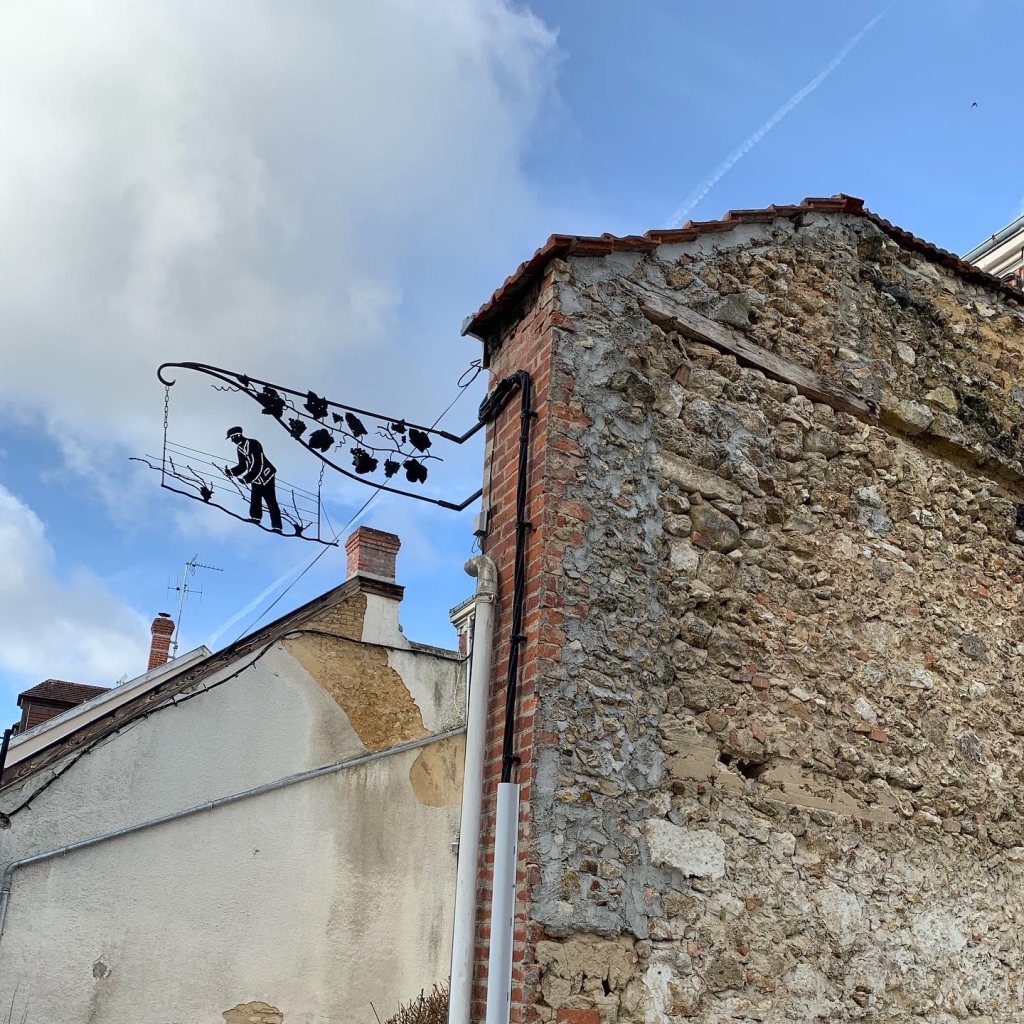
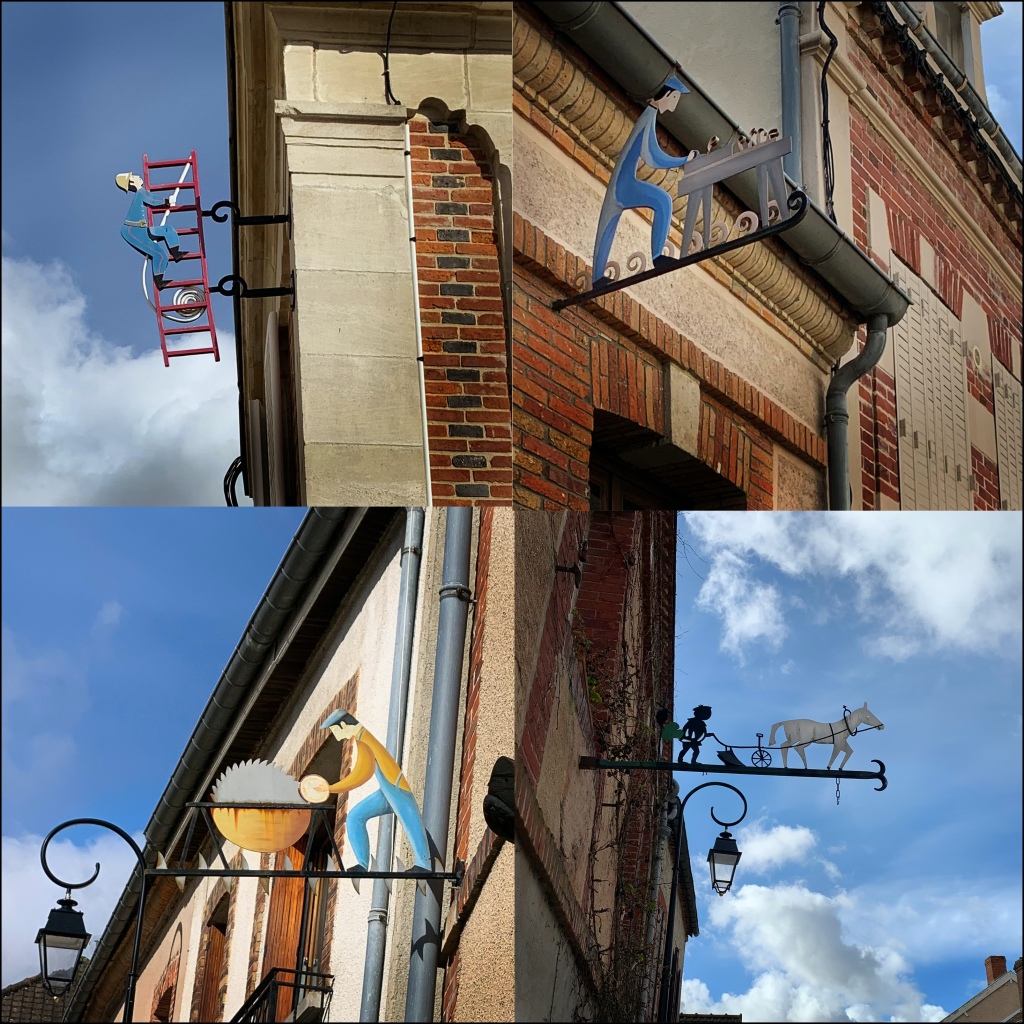


If I returned in summer, no doubt window boxes would explode in bloom and restaurants would overflow with tourists. In February, the general emptiness of the town was perhaps it’s greatest charm.
Yet while Hautvillers may be visually indistinguishable from so many French villages, this place is uniquely steeped in the tradition of champagne.
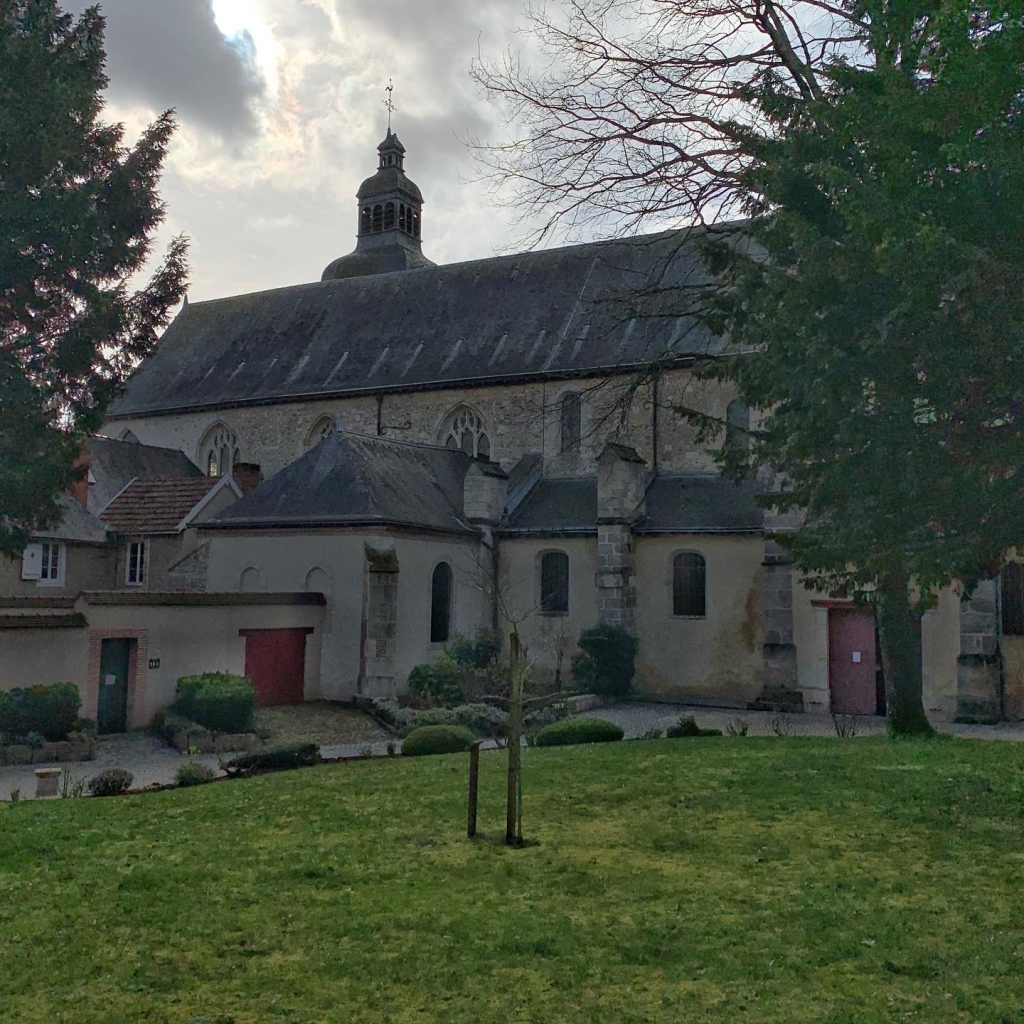
Here, in the church, rests the body of Dom Pérignon. While I had passed no one on the streets, the church bustled with pilgrims. I awaited my turn while at least a dozen people, most of whom were speaking french, huddled over Dom Pérignon’s grave.

In researching this trip, I had found tours at extortionist prices that promised a visit to this otherwise “inaccessible grave”, but on the day that I was there—and per the TI, this is the normal case—the church door was unlocked and admission was free.

The adjacent abbey is now owned by the champagne maker Dom Pérignon and is closed to the public (but I believe is included with the golden ticket tour). A peek from the entryway was enough for me.
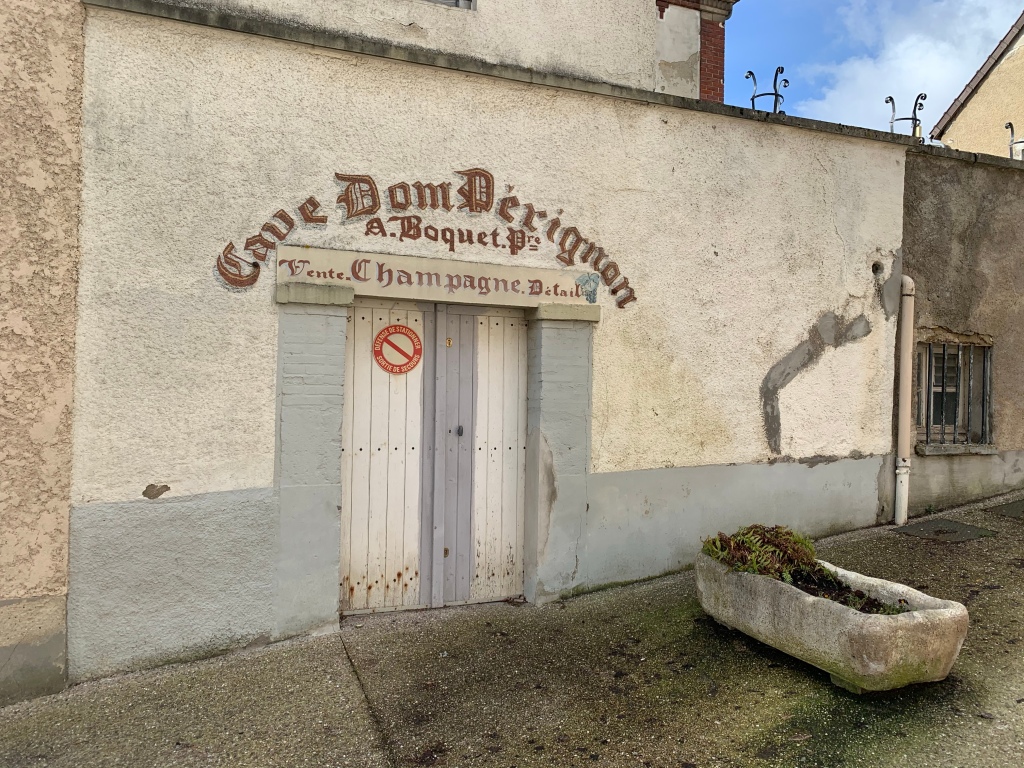
From there, it didn’t take long to walk all the streets and settle into the process of selecting a place for lunch. As it turns out, this was simple since only one restaurant was open that day.
The meal was neither memorably good nor hauntingly bad, but I do clearly recall the kind waitress who smiled at my murky French and the feeling of peacefulness as I sipped champagne by the window while looking down into the valley. I sat for an hour mesmerized, cocooned in one of those perfect travel moments that are impossible to conjure but rather arrive unannounced and almost always during the pause between plans.

But I had paused long enough. It was time to walk an hour downhill to the capital of champagne, the city of Épernay.
The approach to Épernay was industrial and dreary. Champagne, after all, is a business which requires massive shipments and nowhere was this more evident than the route into the city. Yet even the center of Épernay was, to me, nondescript. Apparently, February is not Épernay’s best look.

That perception changed once I started up the lavish Avenue of Champagne—a mile-long boulevard of estate after estate standing shoulder to shoulder like sentinels in parade dress. I slouched past in jeans and boots, schlepping my backpack. February, it turns out, doesn’t look great on me either. Clearly I wasn’t dressed to sample from this who’s who of champagne makers.
That was fine by me.
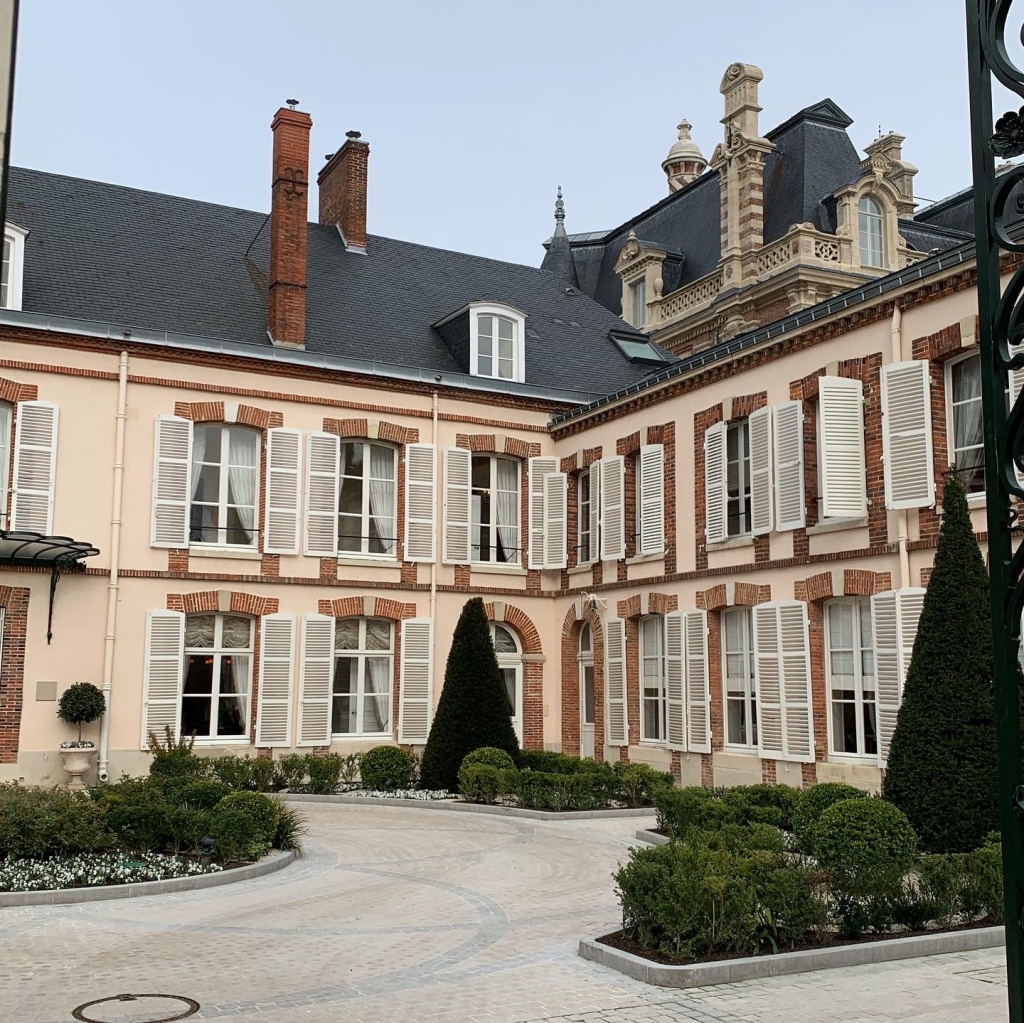
Instead, I spent the afternoon wandering the city, stopping at dimly lit coffee bars, and sitting on the occasional park bench until I checked into the family-owned guesthouse where I was staying near the train station. Early to bed with no supper was my reward after a long day. I fell into bed exhausted.
Day three, I had planned to walk to the grand cru village of Cramant to visit the champagne maker Voirin-Jumel before returning to Paris on day 4. Before the hike to Cramant, I set out early with an entire morning to explore and decided to walk the Avenue of Champagne one more time.
As I turned the corner, I was met by protestors, the champagne workers union of Épernay, who also, it turns out, planned to walk the avenue. It was a sonic BOOM and acrid smoke-filled parade. I turned down a side street and scampered away.
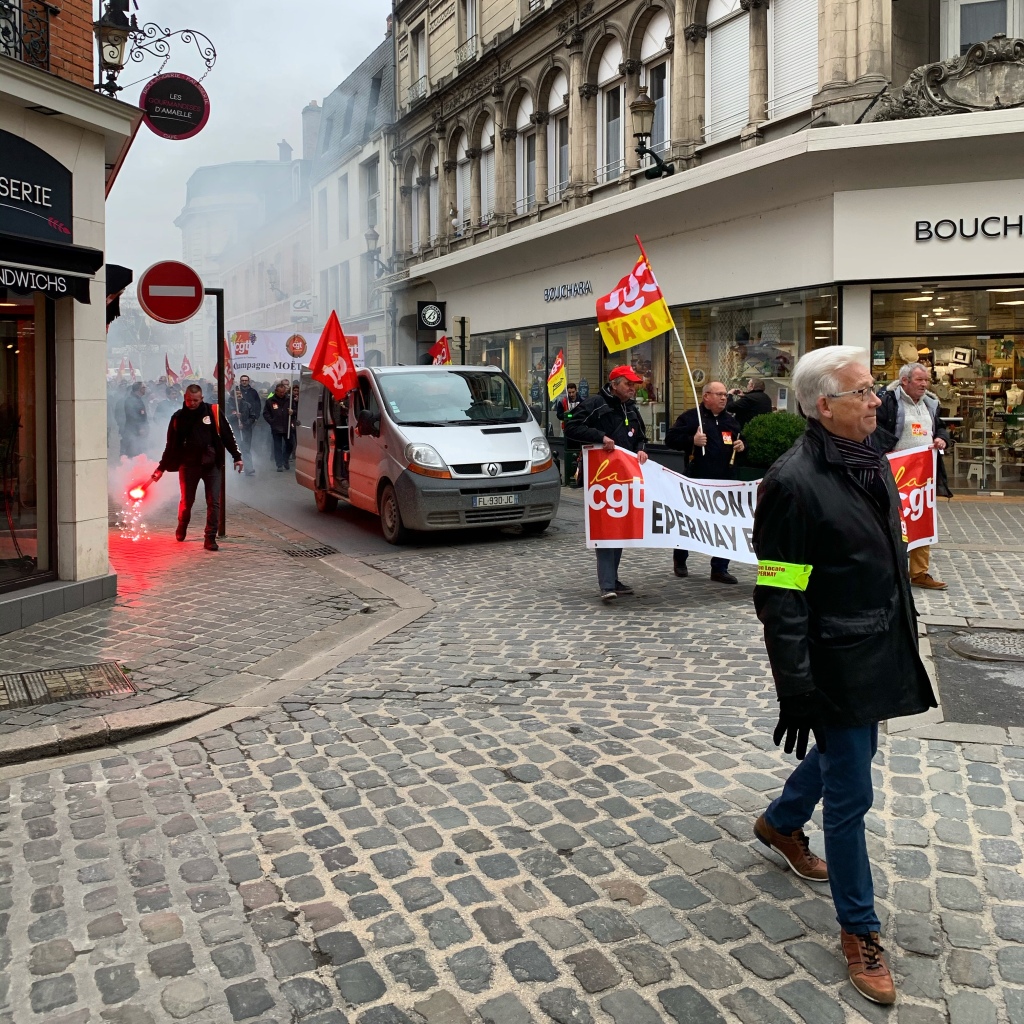
Protests like this occurred regularly in our neighborhood in Paris, so I was used to them and certainly not afraid. Yet with my peaceful morning plans thwarted, I realized I’d had enough. I returned to my guesthouse, grabbed my backpack, paid my bill in full, and left on the next train to Paris. If I hurried, I’d be home in time for lunch with Pat.
So I did, and I was.

Tip: before you go, and especially if you have little experience with champagne (or Bordeaux or Burgundy or wherever you’d like to explore), ask anyone you trust for recommendations. I solicited names of champagne makers from a French specialty wine shop in Virginia and from my wine man in Paris. I asked the sommelier at some of my favorite restaurants for advice (some of which carry very small names that don’t export). I discovered Voirin-Jumel at a champagne class in Philadelphia.
Since my goal was to walk, I took this list of champagne makers and mapped it. This discounted some of the list and created the framework for my walk.
Then I searched for a website or an email address for each of them. I found most places in champagne have tasting schedules online, and you can easily book. Others, I emailed and requested an appointment.
If you can get by in French, write in French. If you can’t, don’t panic. I found English to be much more universal in champagne than in other areas of France.
Be forewarned. In general, France isn’t like Napa Valley or the vineyards around Charlottesville. You can’t just show up and expect to taste but don’t let that stop you.

Categories: Exploring France
I loved reading this travel narrative, Julie! What fun!
Thank you, Catherine!
Well damn!!!! You’re making me even more of a champagne girl.
Sent from my iPhone
>
Google this, Sue. “Biking the Loire Valley” then have your people call my people….
Marty and I so enjoy hearing all about your travels Julie. Thank you again for sharing!
Debbie
You are too kind, Debbie. If you ever feel like walking around France, let us know!
I. Love. This. Thank you!
😘